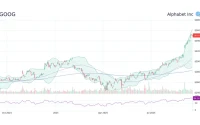Fifth Third's $10.9 Billion Gamble: What Are They Really Buying?
Fifth Third Bancorp and Comerica are heading to a shareholder vote on their proposed $10.9 billion acquisition. That's the headline. But what's buried in the fine print? What are Fifth Third's strategists really betting on with this move? Let's dissect the numbers behind this deal.
The immediate question is, of course, the price. $10.9 billion is a hefty sum (representing, roughly, the GDP of Grenada). What are Fifth Third's analysts seeing that justifies that valuation? We’re told this is about expanding market share and streamlining operations. Okay, but those are the what. Let's look at the how.
One potential rationale lies in Comerica's commercial banking focus. Comerica has a strong presence in key markets, particularly in California, Texas, and Michigan. Fifth Third, while a solid regional player, hasn't had that same level of penetration in those areas. Acquiring Comerica instantly gives them a foothold, bypassing years of organic growth and branch openings. (The time value of money here is crucial, and potentially justifies a premium.) But the question is if you can justify that price.
The Interest Rate Wildcard
Now, let’s talk about interest rates. The elephant in the room. Comerica’s profitability, like most banks, is heavily influenced by the interest rate environment. With rates potentially stabilizing or even declining in the coming years, the net interest margin (the difference between what a bank earns on loans and pays on deposits) could compress. This could squeeze profits and make that $10.9 billion price tag look less appealing. I've looked at hundreds of these filings, and this particular risk factor is downplayed in both banks' communications.

Fifth Third is likely betting on their ability to extract cost synergies. This means cutting overlapping branches, reducing staff, and streamlining technology systems. The problem? Synergies are notoriously difficult to achieve in practice. Cultural clashes, integration challenges, and unforeseen expenses often derail even the best-laid plans. What specific synergy targets are they aiming for, and what's the historical track record of these banks in achieving similar integrations? Details on this remain surprisingly vague.
The Unseen Risk
Here's where I think we need to dig deeper: the loan portfolio. What's the composition of Comerica's loan book? How much exposure do they have to sectors that are currently under stress, like commercial real estate (especially in those key markets like California)? A detailed analysis of loan quality and potential credit losses is crucial to assess the true risk profile of this acquisition. The official reports paint a rosy picture, but I'm always wary of relying solely on management's assessment.
The geographic concentration is also something to consider. Comerica's strong presence in California, while attractive on the surface, also exposes Fifth Third to the economic volatility of that state. If California's economy slows down, or if there are unforeseen regulatory changes, the entire acquisition could be jeopardized. The geographic diversification benefits, therefore, need to be weighed against the potential risks of over-reliance on a single market. And this is the part of the report that I find genuinely puzzling.
A Pricey Bet on a Questionable Hand
Fifth Third is betting big, no question about it. But based on the available information, it feels like they're paying a premium for a hand that might not be as strong as they think. The interest rate environment, integration risks, and potential loan portfolio issues all raise red flags. Whether this gamble pays off remains to be seen.










